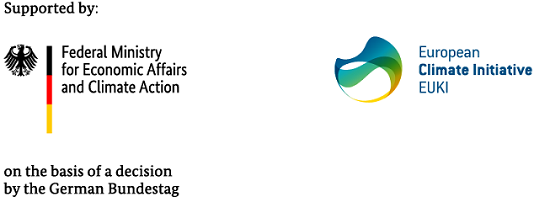Methodology
The rationale
The Transport Emissions Disaggregation Tool (TEDiT) allows users to understand better the main drivers of emissions from passenger transport and,
in this way, to more effectively identify the overlaps and gaps in the policy framework.
For this purpose, we identified 21 levers that determine the levels of emissions and mobility listed in Table 1.
| Mode of passenger |
Lever |
Unit |
| Passenger cars, buses, motorcycles, trains, aviation |
Activity level |
passenger-kilometres travelled per capita per year |
| Passenger cars, motorcycles, buses, trains, aviation |
Load factor |
average number of passengers in a vehicle |
| Passenger cars, motorcycles buses, trains, aviation |
Emissions |
gCO2 per vehicle-kilometre travelled |
| Metro and Tram, cycling, and walking |
Activity level |
passenger-kilometres travelled per capita per year |
We identified only one lever for walking, cycling, and subway usage: activity levels. While a single lever is obvious for walking and cycling,
we can explain this for the subway (and trams) by noting that we do not include emissions from electricity generation in the calculations.
While the decarbonisation of electricity generation is essential, it must be addressed by a different set of policies not covered in the framework of the project.
Data sources
We prepared each lever data set for 2000-2019 based on different sources. These sources could be divided into three categories:
-
Category 1: JRC POTEnCIA project provided historic data up to 2017/2018 at a high level of disaggregation. We used these data as the starting point of the assessment.
-
Category 2: To update and expand the data, we used the most recent data from EUROSTAT, DG MOVE, and UNECE. This concerns especially the period after 2017/2018.
-
Category 3: We used national data to close gaps and, in some cases, replace the above sources if considered more reliable by national experts.
When data were not available or considered incorrect, members of the consortium used their expert judgment, extrapolation, and interpolation to close the gaps.
We encountered a significant challenge concerning data for activity levels for walking and cycling.
While data for walking was not available from any sources, data for cycling has been gathered by the EUROSTAT but is only available for Denmark and Hungary.
Nonetheless, to reflect the importance of these modes of transport in decarbonising the transport sector, we decided to include numbers based on sources for other countries (e.g. the Netherlands, the UK, and the UK) and input of experts from the countries assessed.
More information can be found here
Emissions and mobility in 2030 and 2050
By default, the values of the levers in the sliders for 2030 and 2050 remain at the levels for 2019 until the user makes a change. When the values are changed, the emissions and mobility for the years between (2020-2029 for 2030 and 2031-2049 for 2050) change linearly.
The slider allows the user to assess the impact on emissions and mobility resulting from changing only the specific lever. E.g. if the activity levels remain the same but the load factor changes, this results in lower emissions at the same level of mobility - but with fuller vehicles.
Modal shift
The tool addresses modal shift indirectly. We assume that promoting an increase in walking, cycling, public transport, or train travel will decrease the utilisation of other modes of transportation, especially driving and, to some degree, short-haul flying.
The replacement scale depends on the specific circumstances in a given country and planned investments in the infrastructure.
What is possible using TEDiT Approach?
Quantification of the impact of different levers on emissions and mobility.
For example, increasing the number of passenger kilometres travelled by passenger cars by 1000 km/capita
(or 10% of total passenger kilometres travelled) will increase emissions from passenger transport by 12%.
Shifting 1000 passenger kilometres from passenger cars to trains would keep mobility unchanged.
Still, it would reduce emissions from passenger transport by the same 12% due to this mode of transport's very low carbon intensity.
Data analysis indicates that while passenger cars became cleaner -
in Romania, their emissions intensity decreased by almost 15% between 2000 and 2019 - they have also become much lonelier:
a reduction from 2.5 persons per vehicle in 2000 to 1.9 person per vehicle in 2019.
Calculations using TEDiT shows that increasing the load factor to the level seen in 2000 would reduce emissions by 13% at the same level of mobility.
TEDiT also allows quantifying the impact of different scenarios on emissions.
For example, shifting 20% of passenger kilometres from passenger cars to rail, increasing the load factor of vehicles from 2 to 2.5,
reducing average emissions of the car fleet to 100 gCO2/km, and doubling the number of passenger kilometres walked and cycled, would decrease emissions by 26% and increase mobility by 3%.
Provision of ideas how to shift the values of the levers in the desired direction
The link to Policy Measures next to each lever takes the user to a list of interventions that would allow a shift in the desired direction. The project consortium identified over 60 measures that could reduce activity levels and emissions in highly emitting modes of transport (e.g. passenger cars, aviation) and increase activity levels for low (buses, trains) or zero-carbon modes of transportation. We expect that increasing activity levels for low and zero-carbon modes of transport will result in a modal shift.
The policy measures listed also provide ideas on reducing emissions from different modes of transport and increasing the load factor when this is desirable. The list of policy measures also lists interventions that governments shouldn't prioritise at the moment, e.g. utilisation of hydrogen or biofuels for passenger cars, with explanations and suggestions.
Provision of framework to identify overlaps and gaps in addressing emissions from passenger transport
Strategies aiming at reducing emissions in the passenger transport sector tend to focus on the solutions already implemented in other countries. A case in point is the focus on emissions reduction per vehicle kilometre, which several policies target, such as emissions standards and the promotion of e-mobility. While very much desired, a reduction in emissions per vehicle kilometre was counterbalanced by increased activity levels and a decrease in load factor, which increased overall emissions from passenger transport.
At the same time, few and, in many cases, no policy addressed activity levels from high-emitting modes of transport, especially aviation. The roles of cycling and walking as an alternative to short-distance car travel also did not deserve enough attention in strategies aiming at emissions reduction from passenger transport.
The disaggregated approach allows for identifying better overlaps resulting in inefficiencies (e.g. too many resources spent to address one lever) and gaps that undermine the policies' potential beneficial impact (e.g. lack of policies addressing load factor or activity levels). The disaggregated approach allows us to develop a more holistic mix of policies resulting in a faster reduction in emissions from the challenging sector.
What is not possible using TEDiT?
Quantification of the impact of specific policy measures on emissions
While the policy measures explain how to shift the values of the respective levers in the desired direction, the tool does not quantify the impact of these measures. It is beyond the project's scope, and such quantification depends on the specific circumstances in a given country. For example, increasing the prices of flight tickets will have a different impact depending on the level of income and the availability of alternatives. Instead, the description of the policy measures does include references to studies already published that could help governments conduct such quantifications in their specific circumstances.
Comparing the selection to an existing scenario
At the moment, the tool presents historical data between 2000 and 2019. To assess the impact of different levers on emissions and mobility, users can shift the values of the 21 levers (for each target year, respectively). There is no future scenario integrated into the tool that users could compare against the current selected values. This decision was driven by the need to make the tool simple and easy to use, e.g. to develop a scenario based on the calculations resulting from the tool.
Illustration of the impact of different measures at the city level
The current version of TEDiT provides data for four countries: Hungary, Lithuania, Poland, and Romania, as well as for the EU27. However, the approach can also be applied to other countries and even specific cities if the necessary data is available.
The excel tool behind TEDiT can be shared with other stakeholders. For this purpose, please contact us.




